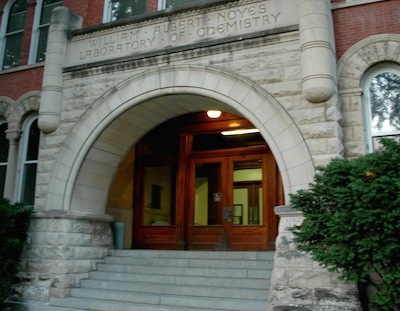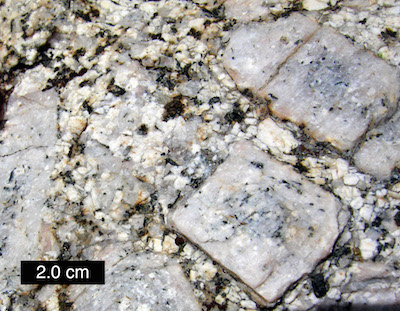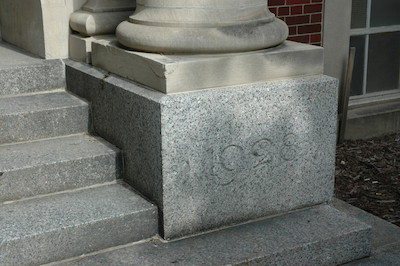Noyes Laboratory and Geology
In 1901, the Department of Chemistry moved out of Harker Hall and into its new building, which was later named after the long-time departmental chairman.
The west entrance (on the Quad side) is framed by Bedford Limestone, but for the rock featured on this page, focus on the steps. They are fashioned from blocks the Reformatory granite porphyry, quarried in Minnesota – a hard and durable stone suitable for exterior use. Porphyry refers to an igneous rock with different grain sizes: this particular one contains large crystals of white feldspar (1-2 cm long), surrounded by smaller crystals of gray quartz and black biotite. These are old rocks that formed more than 2 billion years ago.
This porphyritic granite has prominent crystals of white feldspar (1-2 cm long), surrounded by smaller crystals of gray quartz, black hornblende and biotite, plus more feldspar. Although the surfaces on the Noyes stairway have been cut and smoothed, you can still see large feldspars like these.
{orpyritic granite is used in other places around campus. For example, the image to the left shows the cornerstone of Talbot Laboratory. In this rock, the biggest crystals are a type of feldspar that looks slightly tan or pink. View details by zooming in on the linked image.
Further geological information about Minnesota Granites
Sources
- West, 2012, Guidebook to the Geology of Quarry Park
- Granite porphyry image by Mark Wilson
- UIHistories Image IDs 16050 and 11969
Image selection and text by Eileen A. Herrstrom 2014




